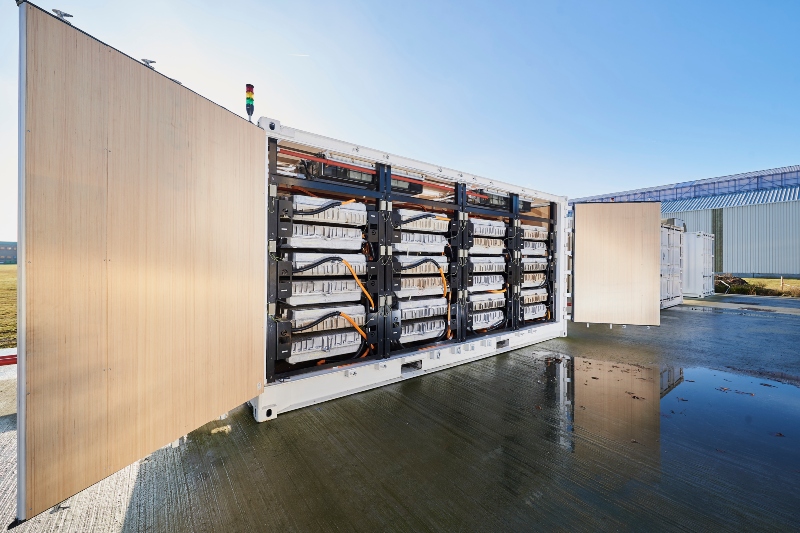

When an electric vehicle (EV) reaches the end of its life, what happens to the batteries? This question led one company to create a new solution that takes batteries from yesterday’s EVs and repurposes them to power the EVs of today.
The environmental case
EV batteries pose a problem. Given the environmental impact of mining the precious metals required to create lithium batteries, there is a strong argument to reuse or recycle these products. Unfortunately, the business case for recycling often does not stack up, leading to most lithium batteries going to landfill. A study published last year in the Journal of the Indian Institute of Science found that only 1% of all lithium batteries are recycled in Europe and North America, compared to 99% of lead acid batteries.
At the same time, experts are predicting a huge rise in the number of EV batteries that have finished their useful life in vehicles over the next few years, mirroring the EV adoption curve. The International Energy Agency (IEA) estimates that total global capacity for recycling EV batteries stands at just 180,000t per year. It warns that, by 2040, there could be 1,300-gigawatt hours’ worth of batteries no longer suitable for EV use, far exceeding the recycling industry’s current capabilities. In addition, market analysts McKinsey estimate that, in 2025, there will be 800 million tonnes of EV batteries ending their first life applications. In 2035 this figure will grow to 3,400m tonnes and hit 7,300m tonnes by 2040.
A new solution
UK company Connected Energy has found a novel way of repurposing former EV batteries as battery energy storage systems (BESS). These systems aggregate the EV batteries to provide solutions – including optimising microgrids – and to support EV charging hubs. The company finds that batteries in end-of-life EVs can have up to 80% of their original energy storage capabilities, meaning they can have a long and useful second life in BESS.
‘Giving batteries a second life realises more value from the embedded resources and displaces the environmental impact of new battery production,’ says Matthew Lumsden, Connected Energy’s CEO. ‘It also delays recycling until the industry has developed more efficient and cost-effective processes, while improving the overall economics for our transition from fossil fuels to EVs.’
Connected Energy’s E-STOR system can store 360kWh of electricity, enabling charging hubs to use it to boost available power during periods of peak demand. Its intelligent management system means E-STOR can integrate with on-site renewables like solar, as well as the grid and EV charging infrastructure. One of its key advantages is on sites where the grid connection cannot support any more EV charging – previously the only option here was to pay the distribution network operator (DNO) for a costly infrastructure upgrade.
Case study: Dundee
Dundee Council now has several E-STOR systems supporting EV charging hubs across the city, with the most recent being two units deployed at its Clepington Road facility. This site is home to the UK’s first rapid charger and the council wanted to expand this infrastructure by creating two substantial hubs – one with public access, and the other solely for the council’s fast-growing EV fleet.
Connected Energy installed two E-STOR systems which provide different benefits to the two hubs. In both cases, E-STOR is configured to manage peak loads, ensuring that the hubs do not exceed their maximum import capacity, which is the cap on how much power a premises can draw down from the grid. E-STOR is programmed to monitor the grid load, and when demand from the vehicles plugged into the hub gets close to exceeding the import capacity, E-STOR kicks in to bridge the gap.
Both hubs will include solar PV, so the BESS is configured to store solar energy for charging vehicles later. Integrating E-STOR with both a solar PV array and the grid ensures that the site optimises its use of renewable energy, providing cost savings and environmental benefits. In addition, the E-STOR provides energy resilience as a reservoir of power for use with mission-critical vehicles during any grid supply issues.
Fraser Crichton, corporate fleet operations manager for Dundee City Council, said: ‘Our fleet includes emergency call-out vehicles used by plumbers and gas engineers, so it is essential that these vehicles are always available. The battery energy storage system at Clepington Road provides that additional energy resilience that we need.’
This article first appeared in the summer issue of LAPV. To subscribe for free click here.